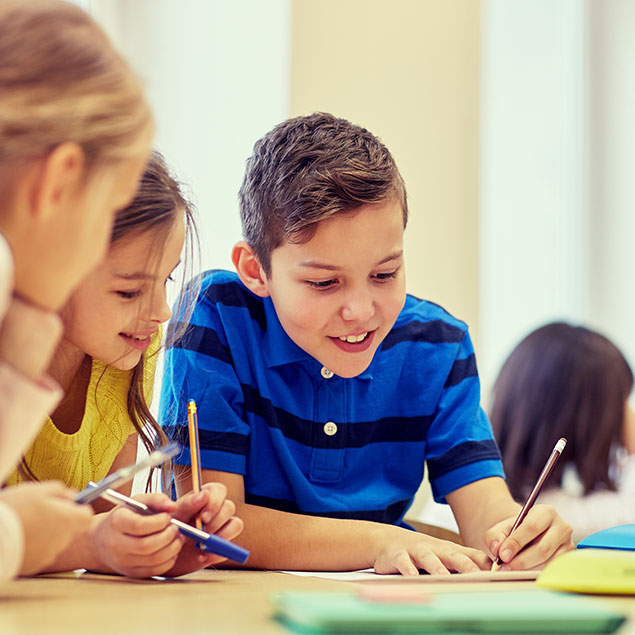Group and Individual Writing Game to Encourage Creativity

One of the things that many parents struggle with is teaching their children to love writing and to associate it with fun rather than being something that they are forced to do. The best way to do this is to create an atmosphere in which writing is a game, and the object is to have fun rather than creating a finished object. One easy way to do this is to involve adults or other children in a writing game where a collaborative story is created and based around “words of the week” or “words of the month,” depending on your personal preference.
Pick Your Theme and Word Bank Words
The first step is to outline a number of words that must be used, and to define a theme as well. Usually the theme should be rather broad, so the child has more input. A few examples of themes are: princesses, frogs, the best day ever, and animals. These Word Bank words can be written on a white board or on a piece of paper. Let everyone brainstorm the Word Bank words. Things may get silly!
Player 1 Writes a Sentence
Your child, or in a classroom setting – the first child, aka Player 1, is then asked to write down a full sentence to start out the story. If a Word Bank word was used, Player 1 can check it off.
Player 2 Writes a Sentence
The paper is passed onto the next child or onto an adult who writes another sentence, starting on the next clear line. Again, if a Word Bank word was used, Player 2 should check it off. Here’s the twist – the paper is folded so that only Player 2’s sentence is showing.
Keep Going Until All Word Bank Words Are Used Up
Keep going until all of the Word Bank words are used up. Then read the story aloud, so that everyone who participated can hear the story and see how the individual sentences that they contributed have come together. This can be a good time to discuss how important each sentence can be when writing, and to show children how their work influences the work of others. This story likely does not follow a story arc and you can discuss this as well. Additionally, the story likely does not have resolution.
Move on to Individual Creativity
After the group activity is complete, the children can use what they just heard to create their own individual stories. The easiest way to do this is to write the story on the board or print out copies for everyone, asking them to edit the story – giving it a clear beginning, middle, and end. This allows all of the ideas that they had in their heads as the story was being read to come out and gives them practice editing and polishing a story. Each story should then be read out loud so that each child can feel satisfaction in finishing a story, hear some feedback, and generate new ideas.
This activity can be repeated a number of times, and can even work at higher grade levels as well. The most important components are working together to see how other people’s creative processes work, and finishing a story, which is one of the things that most people have difficulty with. Most children will love this activity because it combines praise for their good work with the ability to completely control what they are working on during the lesson. It also allows children who may be more rambunctious to have a chance to be a story teller and gives them the attention that they want in a structured way that doesn’t encourage bad behavior.
Jonathan Leger is a freelance writer and small business owner. He runs a popular question and answer website with a section for kids at AnswerThis.co.
